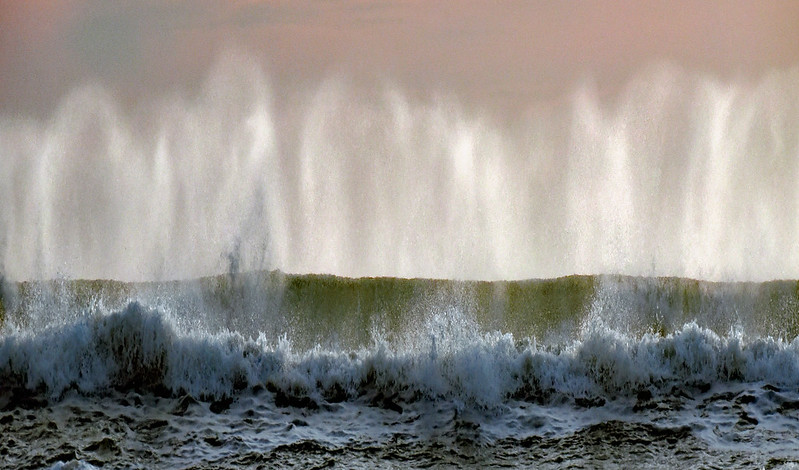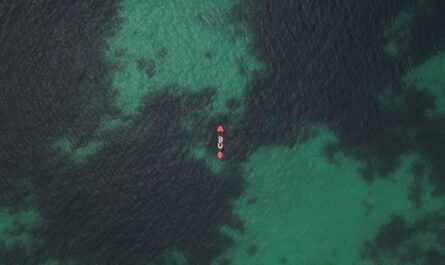The Atlantic Ocean, a vital component of Earth’s global ecosystem, is undergoing profound changes due to climate change. As temperatures rise, sea levels increase, and ocean chemistry shifts, the biodiversity within the Atlantic faces unprecedented challenges. The diverse marine life of this vast ocean, from coral reefs and fisheries to deep-sea ecosystems, is intricately connected to environmental stability. Understanding the impacts of climate change on Atlantic marine biodiversity is crucial to developing strategies to mitigate damage and protect these ecosystems for future generations.
Key Drivers of Change in the Atlantic Ocean
1. Rising Sea Temperatures
Climate change has caused the Atlantic Ocean’s surface temperatures to rise significantly over the past century. Warmer waters disrupt marine ecosystems in several ways:
- Coral Bleaching: Corals are highly sensitive to temperature changes. When waters become too warm, corals expel the symbiotic algae that provide them with nutrients and color, leading to coral bleaching. The Caribbean reefs, in particular, have suffered extensive damage due to rising temperatures.
- Species Migration: Many marine species are shifting their habitats toward cooler waters. Fish populations like cod and mackerel have moved further north, impacting fishing industries and local ecosystems.
- Reduced Oxygen Levels: Warmer waters hold less oxygen, creating hypoxic zones that are uninhabitable for many species.
2. Ocean Acidification
As atmospheric carbon dioxide (CO₂) levels rise, the ocean absorbs about 30% of this excess CO₂, leading to ocean acidification. This process reduces the availability of calcium carbonate, which is essential for marine organisms like corals, mollusks, and certain plankton to build their skeletons and shells.
- Impact on Shellfish: Acidified waters weaken the shells of oysters, clams, and other shellfish, making them more vulnerable to predators.
- Disruption of Food Webs: Many plankton species are affected by acidification, disrupting the base of the marine food chain and threatening larger species that depend on them.
3. Sea Level Rise
Melting ice caps and thermal expansion of seawater due to warming contribute to rising sea levels. Coastal habitats like mangroves, salt marshes, and seagrass beds are particularly vulnerable to inundation.
- Loss of Coastal Habitats: Rising seas erode coastal ecosystems, which serve as breeding grounds and nurseries for many marine species.
- Impact on Human Communities: Coastal flooding displaces communities and affects fisheries, further straining marine resources.
4. Extreme Weather Events
Climate change has intensified storms and hurricanes, which disrupt marine ecosystems and human infrastructure.
- Coral Reef Damage: Powerful storms physically destroy coral reefs, reducing habitat complexity and biodiversity.
- Coastal Erosion: Storm surges erode coastlines, further impacting marine habitats and the communities that rely on them.
Impacts on Atlantic Marine Biodiversity
1. Coral Reefs
The Atlantic’s coral reefs, particularly in the Caribbean, are among the most biodiverse ecosystems on the planet. However, they are highly vulnerable to climate change.
- Bleaching Events: Repeated bleaching events caused by rising sea temperatures have devastated coral populations. Without time to recover, many reefs face permanent damage.
- Loss of Habitat: Coral reefs are critical habitats for fish, crustaceans, and other marine species. Their decline leads to cascading effects throughout the ecosystem.
2. Fisheries and Commercial Species
Climate change affects the distribution and abundance of commercially important fish species, threatening global food security.
- Shifting Stocks: Fish like cod, herring, and mackerel are migrating to cooler waters, disrupting traditional fishing grounds.
- Reduced Productivity: Changes in ocean currents and nutrient availability affect the productivity of fisheries, reducing fish populations.
3. Marine Mammals
Marine mammals like whales, dolphins, and seals are highly dependent on stable ecosystems. Climate change impacts their food sources and migration patterns.
- Loss of Prey: Krill and small fish populations, which form the basis of many marine mammals’ diets, are affected by warming and acidification.
- Disrupted Migration: Changes in water temperature and currents alter migratory routes, potentially leading to increased human-marine mammal conflicts, such as ship strikes.
4. Seabirds
Seabirds rely on healthy fish populations to feed themselves and their chicks. Declining fish stocks due to climate change directly affect seabird reproduction and survival.
Deep-Sea Ecosystems: A Hidden Crisis
The deep sea, often thought to be insulated from surface changes, is not immune to climate change. Rising temperatures and reduced oxygen levels are reaching deeper into the ocean, affecting its ecosystems.
- Thermal Stress: Deep-sea organisms adapted to stable, cold conditions are highly sensitive to temperature fluctuations.
- Oxygen Minimum Zones: Expanding low-oxygen areas threaten species like deep-sea fish and crustaceans.
Conservation Efforts and Adaptation Strategies
1. Marine Protected Areas (MPAs)
Establishing MPAs can help safeguard critical habitats and provide refuges for marine species.
- Atlantic MPAs: Areas like the Sargasso Sea and the Caribbean coral reefs are being prioritized for protection.
- Ecosystem Restoration: MPAs support the recovery of degraded ecosystems, such as coral reefs and mangroves.
2. Sustainable Fisheries
Promoting sustainable fishing practices is essential to maintaining fish stocks and protecting marine ecosystems.
- Catch Limits: Setting quotas helps prevent overfishing and allows fish populations to recover.
- Bycatch Reduction: Implementing selective fishing gear minimizes the accidental capture of non-target species.
3. Climate-Resilient Coral Restoration
Coral restoration projects are focusing on cultivating and planting heat-resistant coral species to withstand rising temperatures.
- Coral Nurseries: Growing corals in controlled environments before transplanting them to degraded reefs has shown promise in restoring ecosystems.
- Artificial Reefs: Structures designed to mimic natural reefs provide alternative habitats for marine life.
4. Global Carbon Reduction
Addressing the root cause of climate change—greenhouse gas emissions—is critical to protecting marine biodiversity.
- Renewable Energy: Transitioning to wind, solar, and tidal energy reduces reliance on fossil fuels.
- International Agreements: Treaties like the Paris Agreement aim to limit global temperature rise and mitigate oceanic impacts.
The Importance of Public Awareness and Advocacy
Public awareness plays a crucial role in protecting marine biodiversity. Education campaigns and advocacy encourage sustainable practices and inspire action at both individual and governmental levels.
- Citizen Science: Programs involving local communities in monitoring marine ecosystems help gather data and foster a sense of stewardship.
- Ecotourism: Responsible tourism supports local economies while raising awareness about the importance of conserving marine habitats.
Conclusion: A Call to Protect Atlantic Biodiversity
The Atlantic Ocean’s marine biodiversity is both a vital natural resource and a barometer of global environmental health. Climate change poses significant challenges, but through concerted conservation efforts, sustainable practices, and international collaboration, it is possible to protect these ecosystems. By acting now, we can ensure that the Atlantic’s rich biodiversity continues to thrive, supporting marine life and human communities for generations to come.



